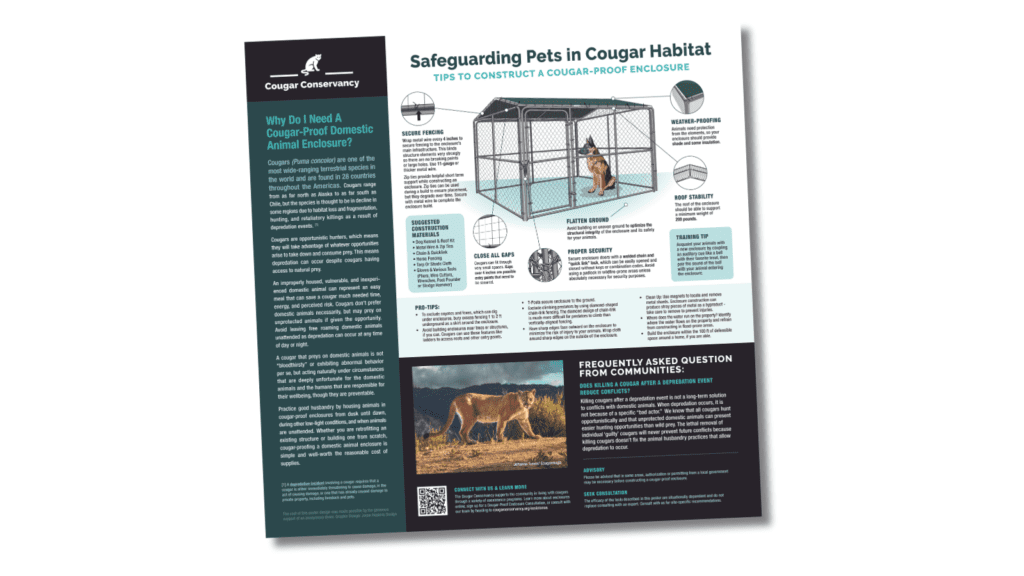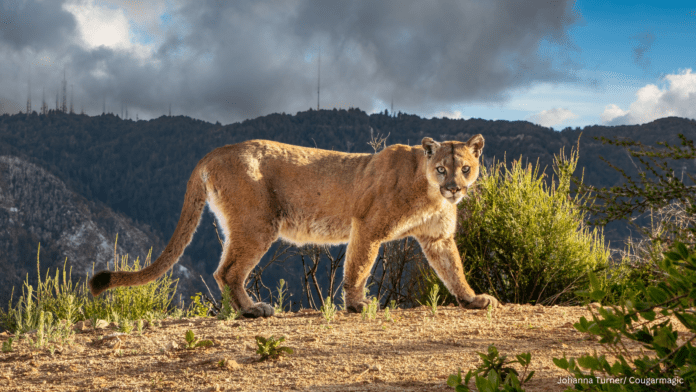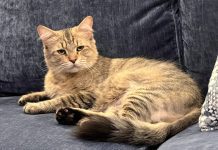The Verdugo Mountains are home to a variety of wildlife; coyotes, bobcats, gray foxes, and occasionally, black bears. In fact, a resident captured coyotes chasing a black bear on their security camera just this month, as reported by ABC7. While many Burbank residents are familiar with the more visible species like coyotes, the hillsides are also frequented by cougars.
Cougars are the only large carnivore in many areas in Southern California, and are the main predator on the area’s dominant herbivore, the mule deer. Like many carnivores, cougars are also intraguild predators, meaning they may prey on coyotes, raccoons, foxes, and bobcats. Cougars are opportunistic hunters who can sometimes prey on domestic animals if given the chance, making it crucial for pet and livestock owners to take preventive measures.
In many areas, black bears are also present and are considered large carnivores based on size, but they are omnivorous and not regular predators of deer. As apex predators, cougars often occupy the top of the food chain in their Southern California ranges, with no natural predators of their own.
Cougars’ ability to survive and reproduce is not only dependent on the availability of suitable habitat, prey, and demographic factors, but is also directly influenced by people’s willingness to live alongside cougars.
To promote peaceful coexistence, the Cougar Conservancy has released a new educational resource: “Safeguarding Pets in Cougar Habitat: Tips for Constructing a Cougar-Proof Enclosure.” This visually engaging resource is designed to provide pet and livestock owners with essential tips on creating safe and secure enclosures to safeguard their animals in cougar country.

“Secure enclosures help prevent conflict with various wildlife essential to our ecosystems, such as cougars, coyotes, black bears, raccoons, foxes, and so on. We use cougars as a flagship species to talk about conflict reduction and peaceful cohabitation with all wildlife,” says Korinna Domingo, native Burbankanian and Executive Director of the Cougar Conservancy. “We hope this poster is helpful to all people throughout the cougar’s range, including residents, wildlife managers, human-wildlife conflict specialists, government agencies and elected officials, and coexistence practitioners.”
This resource is designed to be easy to understand and apply, helping pet and livestock owners create safe spaces for their animals while promoting coexistence with cougars.
“I was thrilled to sponsor the design costs for this resource,” says Debbie Berman. “Cougar-proof enclosures are an act of co-existence by protecting not only pets and livestock, but also protects the cougars from being killed after a depredation event.”
By implementing the tips outlined in this poster, community members can significantly reduce the risk of human-wildlife conflicts, fostering a safer environment for both their animals and local wildlife.
Cougars are important ecologically and culturally. Apex predators can have various effects on the species they prey on, including prey behavior, which in turn can affect and structure other aspects of the ecosystem. Kills made by predators also attract a diverse crowd of scavengers, including mammals, birds, and insects. Cougars also hold sacred significance for local Indigenous peoples.
How to Access the Poster
You can download the free “Safeguarding Pets in Cougar Habitat: Tips to Constructing a Cougar-Proof Enclosure” poster for free from our dedicated web page here.
We invite you to join the Cougar Conservancy in promoting coexistence with cougars and other wildlife by sharing this resource within your communities.
For more information or to schedule a free Cougar-Proof Enclosure Consultation, please visit our website or contact our team directly. Thank you for supporting the Cougar Conservancy and helping us protect both cougars and domestic animals through education and proactive measures.





















